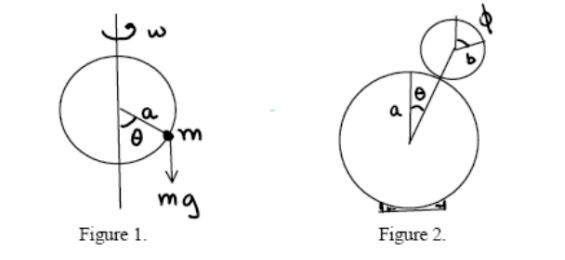Assignment:
A bead of mass m slides without friction on a ring. The ring rotates with constant angular velocity ω about a rotational axis that is aligned with a ring diameter, as shown in Figure 1. Find the Lagrange equations of motion, and the Hamiltonian for the bead. Is the Hamiltonian a constant of motion? Does it coincide with the energy of the system? Interpret the Hamiltonian as the sum of the kinetic energy of a bead rotating on a fixed ring and an effective potential resulting from the gravitational potential and a centrifugal potential. Plot the effective potential as a function of the angle theta for different values of ω and discuss the motion of the bead for all cases. Under which conditions does the bead reach an equilibrium condition where theta remains constant?

Provide complete and step by step solution for the question, use formulas.